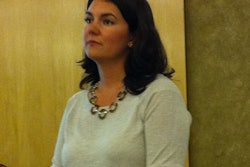Are private-label brand development best practices beneficial or not? I say maybe not so much. Why? Well, let’s start by looking at the definition of “best practice”: a method or technique that has consistently shown results superior to those achieved with other means; and that are therefore used as a benchmark.
If you think about it, since their inception, retailers have been developing private-label product brands and packaging designs by following a “benchmark” that’s been set by national brands. Historically, they benchmark product spec, and follow packaging spec and color cues, and even the communication hierarchy on packaging.
But just what has this yielded for private label? I’ll tell you: on average, less than 20% to 25% of market share, depending on how you look at the numbers. Do you think that is a superior return on investment? I’d say probably not.
The issue is this: When it comes to brand development and package design, the process is really personal, emotional, and very specific to each individual brand. Of course there are some fundamental creative problem-solving processes that will help to develop great brands and great packaging—and if you insist on calling them “best practices,” then be my guest and go ahead.
But regarding private-label packaging, the term “best practices” really describes a situation where everyone ends up following the same processes and ends up developing the same end result. Let’s face it, brand and package designs that yield truly superior results are ones that have been developed “out of the box” instead of by following the leader.
So I’m saying that retailers need to take more risks by breaking the mold and doing things differently. This is the only way you will truly achieve brand status in the consumer’s mind—where brands have meaning and purpose, and where they stand for something. But a private-label brand will never reach that hallowed status by benchmarking itself against standards that other brands have already determined.
Private-label brands blazing their own trail
One retailer that dared to look at branding, package design, and structure a bit differently, and has achieved brand status, is the Duane Reade/Walgreens’ Good n’ Delish brand. From a product perspective, the fundamentals of this brand were “benchmarked” against other successful premium private-label brands. Yet the company did push the envelope by developing unique and differentiated products that were sourced from local as well as international vendors.
When it comes to premium brands, most all retailers develop unique and differentiated products, but the core difference with Duane Reade/Walgreens’ products is the way in which they were branded and packaged. Yes, some fundamental brand development “best practices” were used—including understanding who the consumer is; analyzing category and market data; a deep study of the competition; and evaluating other successful private-label programs—yet in the end, Duane Reade/Walgreens traveled down its own path to create brand meaning and purpose that would uniquely belong to its own brand and enhance its desired market positioning.
The design, for example, was a combination of gut feeling and market insights. To start, Good n’ Delish as a brand name just felt right for the unique New York City market. CBX knew that the design strategy for premium goods involves setting the product as a hero and developing a very high-quality product appeal. Yet in this case, the product depiction was more about what the brand stands for—Making NY Living Easy—and giving New Yorkers, who are notoriously demanding and expect the best, just what they wanted—a New York brand image they could relate to.
That kind of fast-forward personality is why you see a chessboard made of dark chocolate squares, salsa using street lights to depict heat levels, and cashews in cabs in New York City—the city’s residents can relate and emotionally connect with these images, bringing Duane Reade a step closer to brand status.
Walgreens also made this brand connection with Ology, a nationally accessible and affordable private-label brand that’s free of harmful chemicals. The core essence is about good for you and good for the environment. It has an easy-to-remember name that means “the sciences” and a unique recyclable structure—all the elements of a successful brand, and one that stands for something that consumers can relate to and support.
Retailers like Trader Joe’s also march to their own beat. Their brand stands for things like sustainability and natural living, and so does their private-label and package design strategy. Other retailers that “get” private label are Whole Foods, Target, and Safeway, all of which have created unique brands and great design that has their own image, is centered on the consumer, and supports their desired positioning in the marketplace.
Tips on leveraging package design
So what do you do after you’ve chucked the proverbial “best practices” out the window? Start by gathering good information about your customers so you know them deeply. Then find out all you can about your category. Then, as you build a private-label brand, leverage design as a powerful marketing tool that can tell your brand story and can also support your market position.
If you ignore this, and simply keep your private-label design functional and benchmark it against national brands, you might be able to get your brand to a “national average” position; but is that what you’re really looking to do? I doubt it.
Don’t be afraid to look at analogous brands outside your category or area of business. You might just get inspired. Think about how truly powerful great design can be, and how far it can take your private-label brand. Think about the technology and fashion fields, and how forward-thinking design can help make people want to associate with and buy your brand.
We all know that the shopping behaviors by channel category (for example) vary. Shopping for headphones has different cues than the dynamics of shopping for a battery. Headphones are an emotional choice in which performance and style are important, while battery purchases are functional. So understanding the way design can be leveraged by category is extremely important in trying to make a solid connection with a customer. Using a single packaging design across all products, where consumer purchase intent varies, could potentially be a mistake. Instead, develop a brand and package design that communicates excitement for each product, in each category, and potentially, in each channel.
You can create that level of excitement for your products, too, if you’re willing to step outside of the box and go for it. So when you approach a private-label design initiative, I would challenge you to set a goal for the brand, understand your customer, dive into the category, and look at the world outside your business. And then push the design approach far past the functional strategy and think about how you can leverage that package to truly make an emotional connection with your customer. This will lead your program to achieve brand status and provide superior results.
Todd Maute is a Managing Partner at brand agency CBX, responsible for building private-label brands.

























